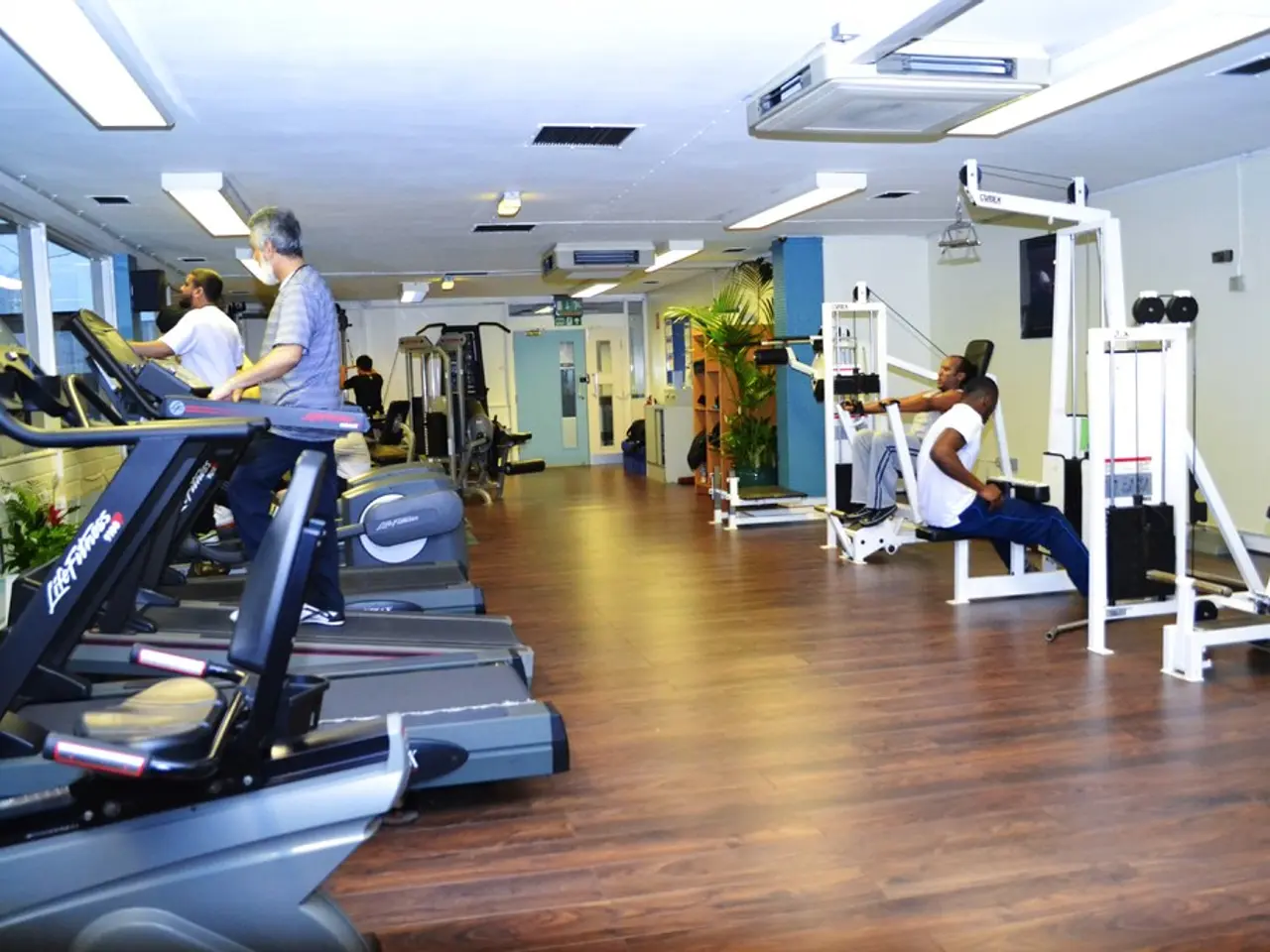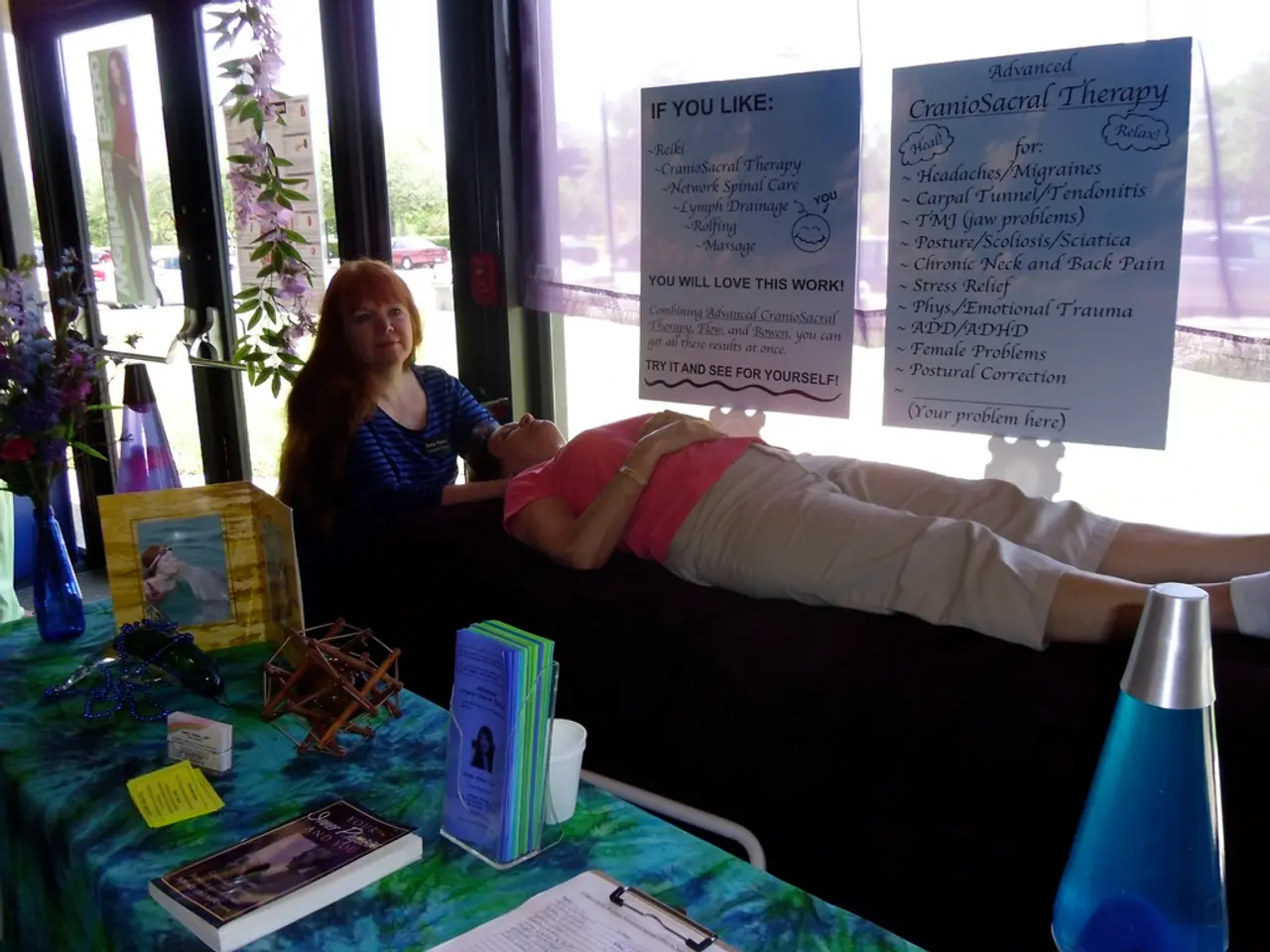Navigating the Locked Door: Understanding Suicide Prevention in Prisons - A Deep Dive into Baden-Württemberg's Strategy
Struggles Within Barbed Wire: Measures Institutions Implement to Combat Inmate Suicides - Overcoming Prison Suicides: Suggested Measures for Correctional Facilities
In the brutally cold world of correctional facilities, inmates are left to grapple with the harsh reality of their lost freedom. With minimal family and social support, they find themselves struggling to cope amid threats of physical and sexual violence, loss of control over their lives, daunting prison conditions, and the overwhelming guilt of past wrongdoings.
The emotional toll can become unbearable, driving some to the very edge. Between 2000 and 2023, a chilling total of 1,794 inmates took their own lives in German prisons - 1,736 men and 58 women. These numbers are a grim reminder of the crisis that unfolds behind those seemingly impregnable walls. Nevertheless, let's delve into the specifics of what happens in Baden-Württemberg.
A Glimpse into Baden-Württemberg's Dark Statistic
Over the past ten years, Baden-Württemberg saw 89 inmates succumb to despair within its prisons. All of them were men, between the ages of 17 and 79. The majority of suicides were reported by strangulation using belts, bedding, or cords. The years 2016, 2021, and 2022 recorded the highest number of suicides, each with 12 reported incidents, while the fewest, five each, were reported in 2018 and 2020.
Scientific research shows that several factors can heighten the risk of suicide among inmates. These include inmates undergoing investigation, those at the beginning of their sentence, young and elderly inmates, inmates in solitary confinement, those convicted of sexual or violent offenses, those with mental illnesses, substance abuse disorders, a history of suicide attempts, and those serving lengthy sentences.
A Precarious Beginning: The Dangerous Dance of Pretrial Detention
Life often spirals out of control during the pretrial detention phase, making it an emotionally taxing period for inmates. Remarkably, the Ministry of Justice spokesperson states that inmates under investigation who committed suicide were often over forty years old. Furthermore, these prisoners frequently took their lives within three days of their detention and were commonly detained in suspicion of manslaughter or sexual offenses.
Additionally, intense emotional exhaustion, often referred to as burnout, is commonly witnessed among inmates after approximately 60 days of imprisonment. Most suicides occur during solitary confinement at night.
Early Detection: The Power of a Screening Process
Accurately assessing the risk of suicide is paramount, and a criminologically accompanied screening procedure has been implemented throughout Baden-Württemberg to achieve this. Inmates at risk of suicide should be identified as early as possible during the admission phase by utilizing a questionnaire.
Sensitive and attentive handling is critical during these initial encounters. Any judgments, instructions, or accusations are discouraged, and the prisoner's well-being is emphasized. Non-verbal cues like facial expressions, gestures, and the conversational partner's own perceptions are also essential in assessing the risk.
The Vital Role of Prison Staff
Prison staff plays a crucial role in preventing suicides. Training sessions for prison staff, along with the topic of crisis and suicide, are an integral part of the recruitment process in Baden-Württemberg's prison system. Prison officers are expected to actively prevent suicides and face criminal charges if they fail to take action despite knowing of a prisoner's suicidal intentions.
When Risk is Detected: What Happens Next?
When a risk of suicide is identified, several options can be taken. Some prisons have monitored cells for those at risk, especially when communal accommodation isn't viable due to security concerns or other reasons. A prisoner may be placed in a protected cell with or without the constant presence of a fellow inmate after a thorough risk assessment.
Most often, communal accommodation is employed as a countermeasure against suicidal tendencies, with care taken to ensure that the selected fellow inmates are suitable.
The Quantified Effort: Suicide Attempts and Prevention
The prisons in Baden-Württemberg meticulously document every suicide attempt and every death, as a Ministry of Justice spokesperson confirms. All actions driven by serious suicidal intent must be reported. Between 2014 and 2024, a total of 332 suicide attempts were documented, with the highest number, 43, reported in 2017 and the lowest, 17, in 2020.
Mental Health and Substance Abuse: Hidden Time Bombs
Mental illnesses and substance abuse are widespread among inmates, often serving as risk factors for suicidal behavior. Therefore, close medical and psychiatric-psychological care for prisoners is vital in suicide prevention efforts.
Inmates: The Helping Hand in Crisis
An innovative strategy involves pairing a vulnerable inmate with an experienced inmate in communal accommodation. This individual is chosen with their consent, trained, and monitored throughout their activity. The aim is to make it easier for inmates to confide in each other and accept support. The Listener Project is implemented at the Schwäbisch Hall prison, while Bruchsal prison utilizes the "Prisoners for Prisoners" program.
Tailoring Prevention: The Rottweil Blueprint
The new prison in Rottweil provides an opportunity to integrate concepts for architectural or psychosocial suicide prevention at the planning and construction stages of the institution. The suicide prevention plan for the new prison includes two suicide prevention rooms and two double cells as Listener cells, as well as five more double cells as Tandem cells.
The Listener accommodation houses new arrivals in double cells with inmates who display high levels of social competence. They are trained to handle crisis situations and support other inmates on an equal footing. These rooms are equipped with board games, tobacco, and coffee. Tandem cells are ideal for investigative custody or the first days of imprisonment. In these double cells, newly incarcerated individuals are paired with a fellow inmate who is particularly socially adept.
A Haven Amidst Despair: The Purpose of Suicide Prevention Rooms
Suicide prevention rooms aim to create a positive environment that aids in the treatment of at-risk inmates. These rooms utilize spatial design to foster a therapeutic atmosphere and make it easier for staff to perform necessary checks without causing undue distress. They are designed without hooks, bars, or similar installations to facilitate anxiety-free expression of suicidal states.
In an attempt to alleviate the emotional struggles faced by inmates, Baden-Württemberg has implemented vocational training programs. By offering opportunities for skills development, these programs aim to provide inmates with a sense of purpose and improved mental health, potentially reducing the risk of suicide.
To further support inmates, the prison system in Baden-Württemberg has embraced the importance of health-and-wellness and mental-health initiatives. These include efforts in the areas of science, such as research into the psychological factors contributing to suicide among inmates, and the promotion of mindfulness and stress management techniques as part of overall well-being.







